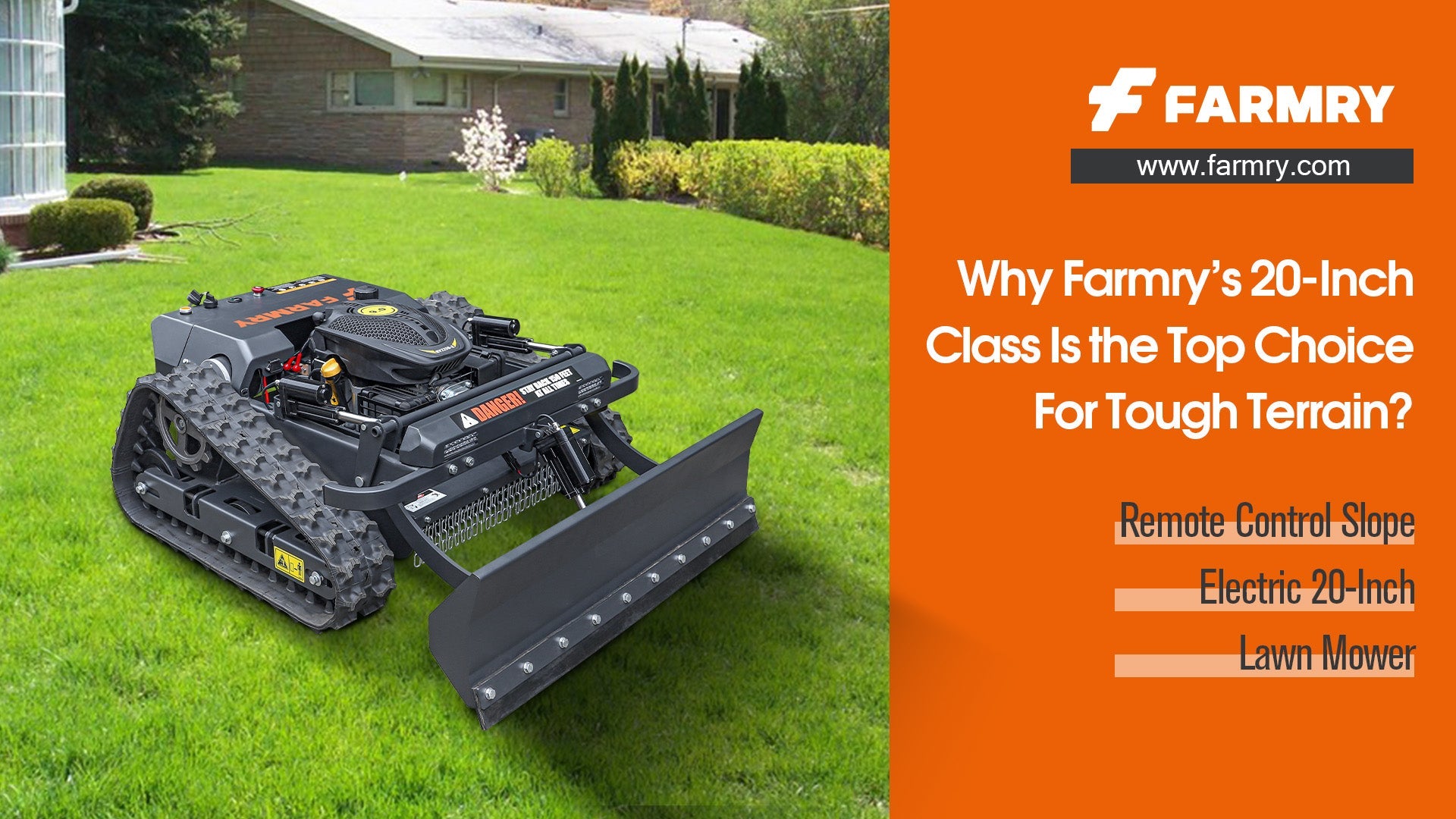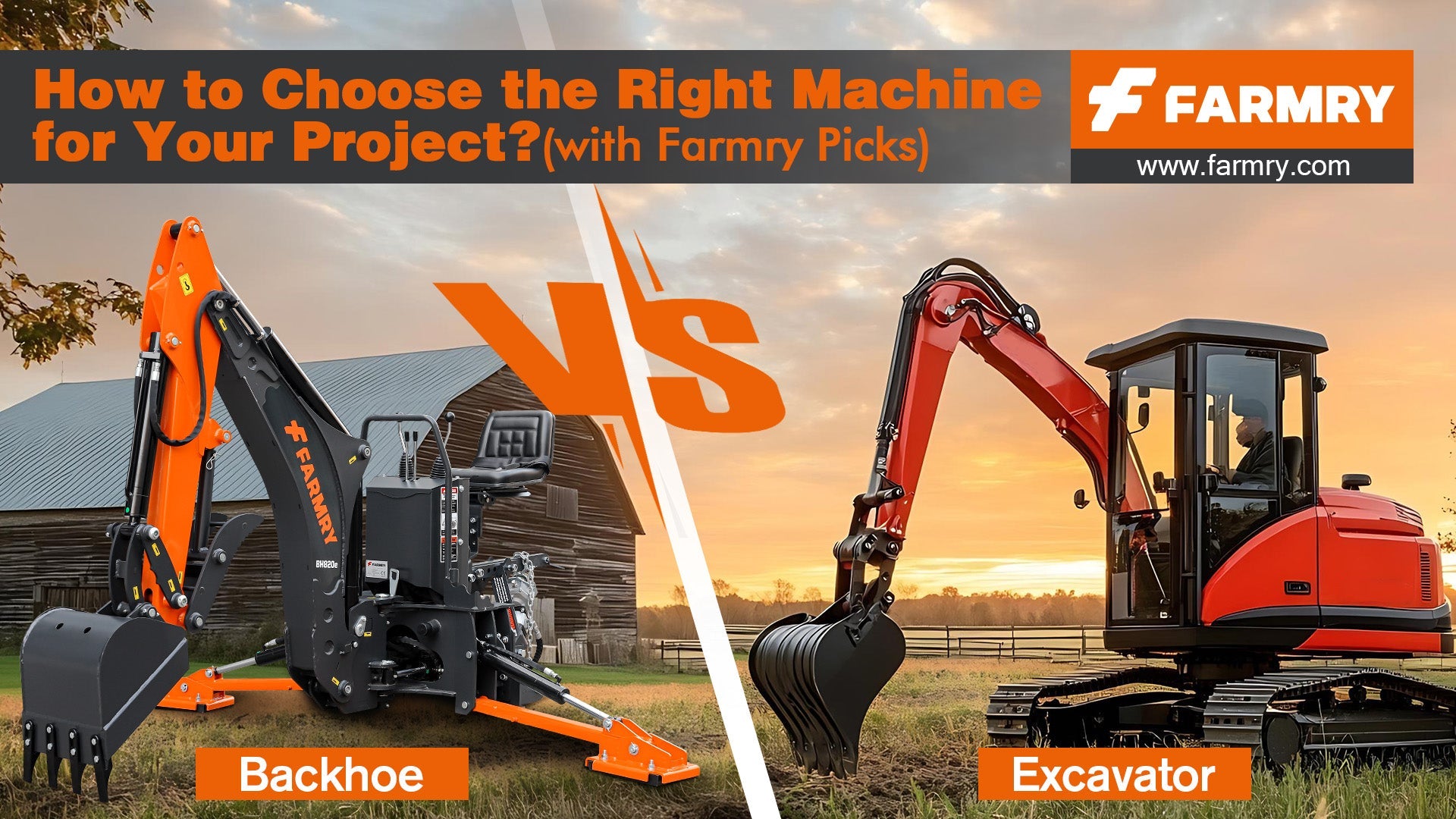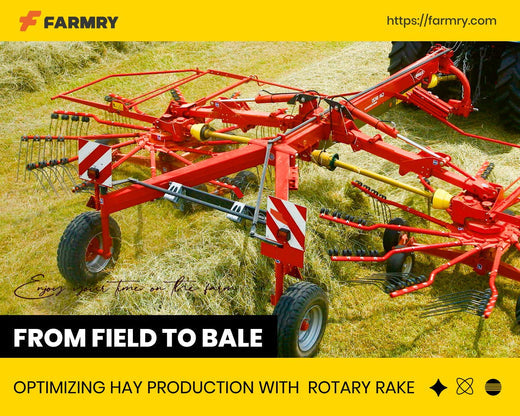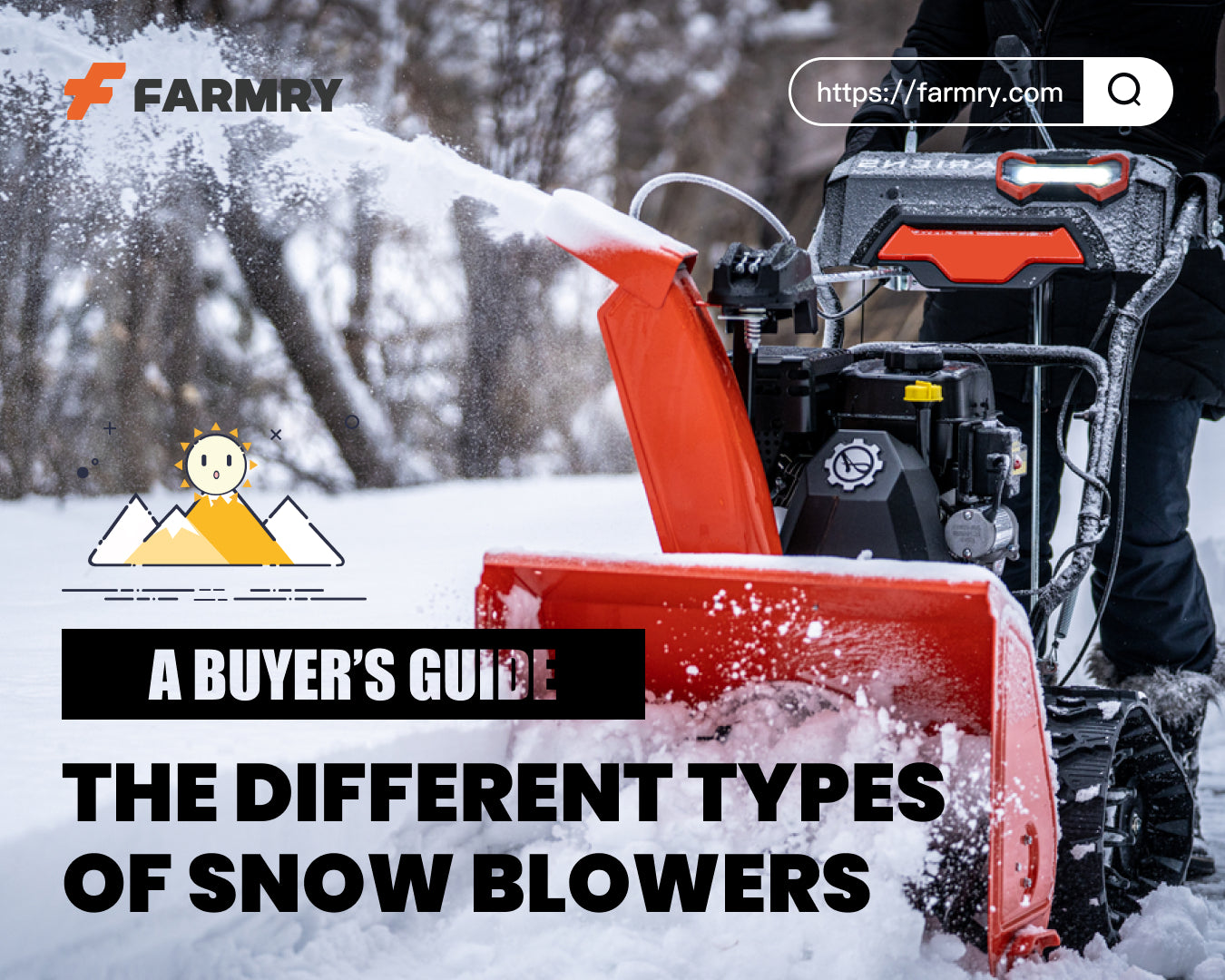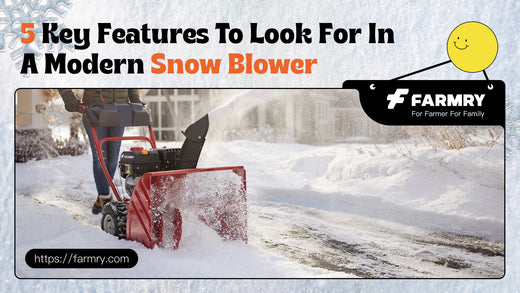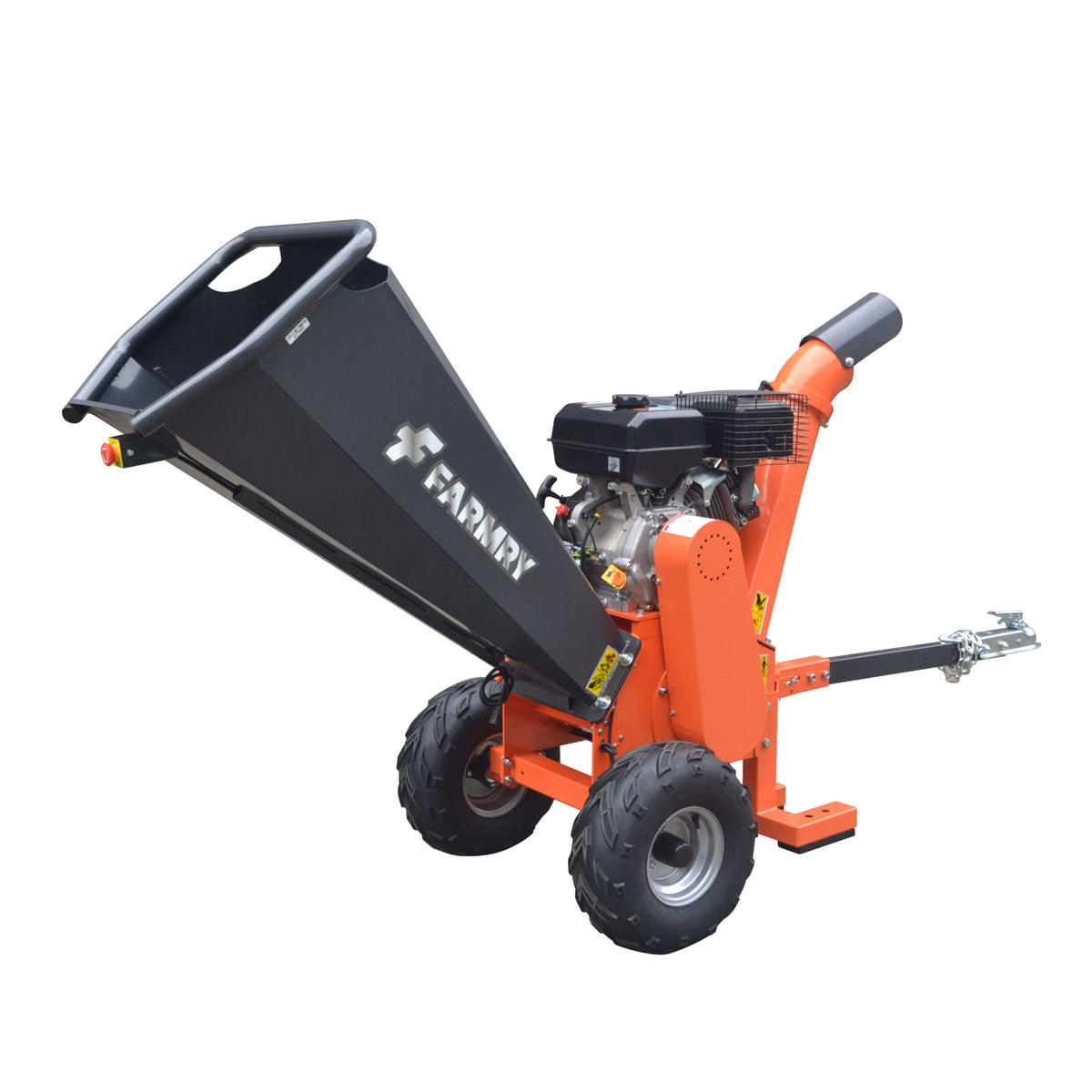Snowblower Horsepower: How Much HP You Really Need for Wet Snow, Deep Drifts, and Busy Driveways (with Farmry Picks)
 If you’ve ever pushed a snow blower into a heavy berm, heard the engine groan, and watched the discharge chute dribble instead of throw, you already know: snowblower horsepower matters. But “how much horsepower” is enough power for your winter, your driveway, and your budget? In this guide, I’ll translate the tech into plain English, fold in real pain points from everyday users, and point you toward Farmry options that work great without overspending.
If you’ve ever pushed a snow blower into a heavy berm, heard the engine groan, and watched the discharge chute dribble instead of throw, you already know: snowblower horsepower matters. But “how much horsepower” is enough power for your winter, your driveway, and your budget? In this guide, I’ll translate the tech into plain English, fold in real pain points from everyday users, and point you toward Farmry options that work great without overspending.
The quick rule of thumb (and why it isn’t the whole story)
Walk-behind snow blowers (gas) are often sized by hp/cc, while tractor blowers use PTO horsepower.
For a typical suburban driveway and small amounts of powder, a compact two-stage with ~8–10 hp (250–300 cc) is a solid minimum.
For wet slush, heavy snow, or frequent deep storms (12"+), aim for more power to keep the impeller spinning fast and the ground speed steady.
On tractors, match the blower width to realistic PTO hp: 50–60" often wants about 20–30 PTO hp; 64–72" leans toward 30–45 PTO hp. If you go wider without enough power, you slow to real slow speeds, the gear box strains, and the chute clogs.
Those “rules” get you close. But conditions—packed end-of-snow plow berms, long driveway, wind-slab drifts—change the load on your machine and can affect performance far more than marketing labels. That’s why understanding torque, low range, and traction matters as much as raw horsepower.
Why horsepower is only half the story: torque, gearing, and width
Horsepower is the rate of doing work. Torque is twisting force. In snow removal, torque keeps the auger/impeller turning when the snow gets wet, deep, or packed. A high-revving motor with thin torque can still stall when you hit the point of maximum resistance—right where a snow plow berm meets your apron.
Width vs. hp: A wider blower moves more snow per pass. That’s great—until you exceed your hp/torque budget. Then you end up pushed backward by the snow or creeping real slow to avoid a break or bog.
Ground speed matters: If your tractor or walk-behind lacks a proper low range or precise reverse gear, you can’t dial the ground speed to match flow through the discharge chute. You’ll hear the clutch slip, assuming you try to “save it” by feathering—bad habit that adds wear.
Gear box and driveline: On tractors, too little PTO hp for the same blower leads to belt slip, shear pins, or gear box stress. On walk-behinds, under-spec’d engines bog and let wet snow pack inside the housing.
Bottom line: Right-sizing isn’t about bragging rights. It’s about keeping torque in reserve so your blower doesn’t choke in heavy snow and winter doesn’t own your weekends.
Personas, pain points, and how to size horsepower
1) The corner-lot commuter
Pain: Long sidewalks mean time pressure. Under-powered snow blowers can’t maintain throw distance; must push harder, go real slow, and make a second pass.
HP guidance: 8–10 hp (250–300 cc) in a 24–28" two-stage is a sweet range. Go up a notch if your city’s snow plow leaves dense berms at each crosswalk.
Farmry tip: Pair a Farmry two-stage walk-behind with a steel discharge chute and easy-to-use reverse gear to keep pace without muscling the machine.
2) Rural driveway owner
Pain: A 400-ft gravel driveway means drifts, depth, and time. Walk-behinds bog; two tractors might even share the job on big days.
HP guidance: Consider a compact tractor with enough PTO hp for a 60–72" rear blower. Under-powering forces real slow travel and frequent stall events.
Farmry tip: Farmry PTO snow blower attachments (50–72") match well with 20–45 PTO hp. Their robust gear box and adjustable skid shoes help when you dig into gravel.
3) Heavy, wet-snow region resident
Pain: Wet snow clogs chutes, kills throw, and overheats lesser motors.
HP guidance: Favor higher hp/cc, tall torque, and an aggressive impeller. Avoid single stage in slop; a two-stage in low range is your friend.
Farmry tip: Look for Farmry units with serrated augers, a responsive reverse gear, and a shear-bolt system that protects the drive when you hit a hidden bit of ice.
4) Budget buyer on a clearance
Pain: Gets a 24" unit with too little hp; it works fine on fluff but fails on the half-foot snow that matters.
HP guidance: Balance width with hp. If the price is too good, the horsepower may be the corner that got cut.
Farmry tip: Farmry’s value-tier machines still aim for a sensible hp-to-width ratio so you finish in a short time without regret.
5) New compact-tractor owner
Pain: Confusion between engine hp and PTO hp; a “25 hp” tractor might only have ~18 PTO hp.
HP guidance: If you want a 64–72" blower, confirm PTO horsepower. Otherwise, drop to a 50–60" unit or stay in low range and accept real slow progress.
Farmry tip: Farmry’s spec charts (and support team) help you match PTO hp to width and depth expectations so you don’t worry about mismatches.
Walk-behind vs. tractor/PTO: which “powered” path fits you?
Walk-behind two-stage snow blowers are agile and cost-effective for city lots. You’ll appreciate the lighter weight, compact storage, and fingertip controls around windows and cars. For heavy snow, choose more power and a meaningful hp/cc rating so the motor won’t stall in slush.
Tractor PTO blowers dominate long driveways, drifts, and wide acreage. They put power at the attachment and keep you off your feet. With a Farmry 3-pt blower, your tractor’s low range and ground speed control determine throughput. Get the range right, and the blower eats snow in one pass. Get it wrong, and you’ll crawl, hear belt squeal, and hope the weather eases.
Key features that amplify horsepower (so you move faster)
-
Low range / hydrostatic finesse: Dial-a-pace traction lets you match feed rate to impeller capacity. Even with modest hp, perfect ground speed prevents bogging.
-
Gear box & driveline integrity: A well-sized gear box and shear protection turn raw horsepower into reliable performance. Farmry designs emphasize serviceable parts so you won’t worry mid-storm.
-
Discharge chute design: A smooth, reinforced discharge chute resists icing and keeps throw distance high in wet snow. Adjustable deflectors help keep windows safe while you blow near the house.
-
Auger & impeller profile: Serrated augers dig into crust; aggressive impellers sustain velocity under load. That’s the difference between two machines with the same blower width and identical hp ratings: one clears, one clogs.
-
Traction & weight balance: Proper weight on the drive wheels or tracks, plus chains if needed, prevents spin-out. Traction preserves torque at the blades instead of wasting it at the tires.
How to choose: a simple sizing path that avoids regret
-
Describe your storm. Average depth, typical snow type (dry vs wet), and the worst case. If drifts routinely exceed a foot, write that down.
-
Measure the job. Driveway length and width decide the total load and the hour you’ll spend outdoors. Corner lot with sidewalks? Add that.
-
Pick the platform. Small lots → walk-behind two-stage (skip single stage if you battle slop). Long lanes → tractor + PTO snow blower.
-
Match horsepower to width. Don’t put a 28" walk-behind on a tiny motor, and don’t hang a 72" PTO unit on 18 PTO hp. If you must compromise, reduce width rather than starving the blower of power.
-
Plan for wet snow. If you ever see wet cement-like storms, treat that as your design point. Go one range higher on hp or drop a width size to keep throughput high.
-
Test the gears. Make sure you have low range, easy reverse gear, and secure controls. Slipping the clutch to fake a lower speed is a caution sign. It can lead to a premature break and repair store visits you didn’t budget for.
Farmry: practical picks for real-world winter
Farmry focuses on tractor attachments and robust walk-behind blowers designed for performance and value:
Farmry PTO Snow Blower (50–72")
Ideal for compact and utility tractors. Match a 50–60" to ~20–30 PTO hp for routine storms. Step up to 64–72" around 30–45 PTO hp if you face deep drifts. You get a serviceable gear box, simple shear protection, and adjustable skid shoes so you can operate on gravel without digging ruts.
Farmry Two-Stage Walk-Behind
For homeowners who want enough power without excess weight, Farmry’s two-stage designs emphasize solid auger housings, reliable reverse gear, and chute controls that hold aim. If your neighbors talk about wet snow ruining their day, choose the higher-hp/cc option and thank yourself later.
Why Farmry here? The brand keeps specs honest, pairing realistic horsepower with clearing width so you don’t need dad (or mom) to rescue you with a truck. The difference shows up when you meet the snow plow ridge and the machine just keeps eating—no drama, no feathering, no riding the clutch.
Real-world scenarios (and what to buy)
Scenario A: 2-car driveway, Midwest powder with occasional March slop
Choice: 24–28" two-stage, 8–10 hp/cc that lands in the mid-tier.
Farmry angle: A Farmry two-stage with reliable chute crank and reverse gear to back out of tight corners.
Scenario B: 600-ft lane, Nor’easter country
Choice: Compact tractor + 60–64" Farmry PTO blower; ~25–35 PTO hp.
Pro tip: Carry spare shear bolts; when you hear a thunk, you’ll be back blowing in minutes.
Scenario C: PNW wet cement, steep apron
Choice: Higher-torque walk-behind or a 50–60" PTO blower with robust impeller.
Farmry angle: Strong gear box, solid scraper edge, and chute that resists icing.
FAQ: your horsepower questions, answered
Q: “How much horsepower do I need for wet snow?”
A: Treat wet storms as your design point. For walk-behinds, favor the higher hp/cc option in a given model line. For PTO units, don’t oversize the width—keep the motor/PTO hp matched so you hold impeller RPM. That’s the difference between clearing in one pass and crawling real slow.
Q: Is single stage okay?
A: In light, dry snow, single stage can work fine. But for heavy snow, drifts, or wet slush, a two-stage’s auger + impeller system offers better sustained throw and less stall risk.
Q: I’m concerned about breaking something. What’s the safe bet?
A: Choose a slightly smaller width over starving the blower of horsepower. Protect the gear box with proper shear bolts and avoid feathering the clutch. Use low range; don’t try to “power through” at high ground speed.
Q: Will a bigger blower hurt my tractor?
A: If the hp mismatch is large, yes—overload can stress belts, the gear box, and driveline. Match PTO hp to width, and set a realistic minimum ground speed so the machine doesn’t bog.
Q: Gas hp vs cc—which matters?
A: They’re related. Cc is displacement; hp is output. Bigger cc often means more torque at usable RPMs—good for resisting stall in packed or deep snow.
Pre-purchase checklist (5 minutes that save 5 winters)
-
Measure width between obstacles and garage windows you’ll need to avoid.
-
Note typical storm depth, the worst drifts, and your snow plow berm height.
-
Confirm your tractor PTO hp (not just engine hp).
-
Ensure you have low range and a functional reverse gear—or multiple forward speeds—to tune ground speed.
-
Decide: Is more power worth a little extra weight? If hills or traction are weak, add chains rather than oversizing the blower.
The Farmry advantage: practical power without drama
You want a blower that finishes the job in a short time, not a diva that needs babying. Farmry’s snow blower collection aims at that sweet spot: enough horsepower, sturdy gear box, serviceable parts, and straightforward controls. Whether you’re purchasing your first snowblower or upgrading after hearing your neighbors brag about throw distance, start with your range and your reality—depth, width, wet vs powder—then match a Farmry model accordingly.
Assuming you follow the sizing guidance here, you’ll operate with confidence, protect your equipment, and keep winter’s worst where it belongs—on the post-storm curb, not in your garage. Pick the right hp, set the right ground speed, and let the blower eat.
Final word
Snow, like life, resists neat formulas. The best you can do is choose honest power, a sane width, and a reliable design so you won’t worry about clogs, stall events, or overheating. Farmry’s snow blowers fit that philosophy: practical, durable, and matched to reality. Size it right once—and every winter after, you’ll step out, fire up, hear that smooth motor, and watch the discharge chute arc snow down the block while your coffee’s still warm.

